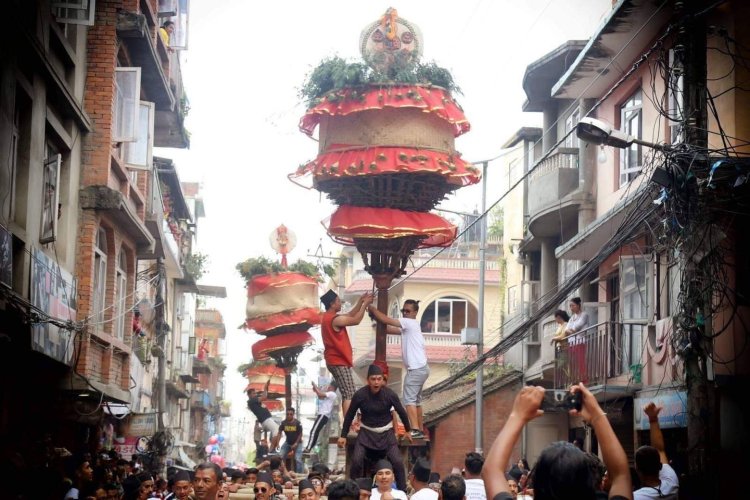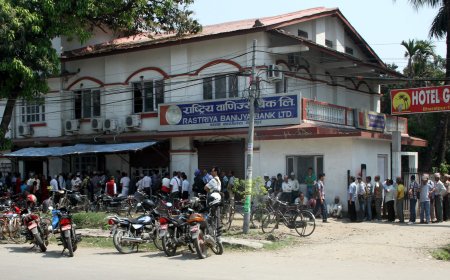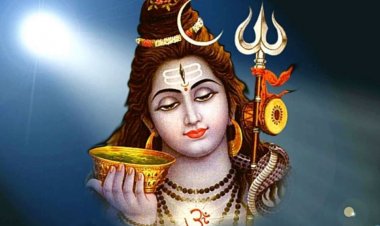Hadigaun Jatra: A Nepali Festival Honoring Lord Narayan's Legend
Hadigaun Jatra: Experience Nepal's vibrant festival honoring Lord Narayan's legend with processions, rituals, and community feasts.

Hadigaun Jatra is a Nepali folk festival celebrated every year on Kartika Purnima (full moon day in the month of Kartika) in Hadigaun village, Kathmandu valley, Nepal. It is a festival to worship the child form of Lord Narayan.
The festival begins with the worship of the idol of Lord Narayan. The idol is placed on a specially decorated chariot and then taken in a procession through the whole village. During the procession, people sing bhajans (devotional songs) of Lord Narayan and dance. The festival concludes with a grand bhandara (community feast) where prasad (food offered to God) is distributed to all. This festival is an important cultural event for the local people. It showcases their faith and devotion towards Lord Narayan.
History
The origins of Hadigaun Jatra are shrouded in legend and folklore, passed down through generations. It is intertwined with a captivating legend involving Lord Narayan, the preserver deity in the Hindu pantheon. In the past, when Lord Narayan disguised himself as a human, he witnessed a laboring lady shouting out her mother's name. The Lord proposed calling out Lord Narayan's name after noticing that. After hearing that suggestion, the woman became enraged and demanded to leave immediately. The Lord was offended and furious about that. And so, he traveled to the Himalayas.
The woman was in anguish since she had been unable to give birth to that child for a full twelve years due to Lord’s curse. Everyone felt sorry for her and prepared to locate the Lord in Hadigaun so that the woman’s pain would come to ease. The people found him somehow and asked him to return. Initially, he wasn't ready, but when the villagers promised to show him a jatra that is performed only in their village and nowhere else in the world. This made him decide to be back in the village.
Lord Narayan was moved after witnessing the jatra, and he chose to pardon the mother, who thereafter gave birth to a young boy. He had a moustache, as the infant was born so late. And ever since then, the Jatra is held annually to appease Lord Narayan.
Proceedings Of Jatra
On the second day of Dashain, the preparations for this Jatra get underway. This Jatra, the priests must come together and create the required wax flower. In addition to the flowers, the priest brings other offerings from Shivapuri and presents them to the idols of Lord Bishnu from his residence. Villagers begin constructing the three wheelless chariots. During Jatra, the offerings made by villagers and priests are transported in saucer-shaped chariots. In addition, chariots have a pinnacle at the bottom and an idol at the top.
The highlight of the jatra arrived with the procession of the three chariots, also known as khats, each carried reverently by a group of dedicated men.
The priests worship the three chariots (khat) that are taken away from Kotal Tole, Nyalma Tole, and Bhimsen Tole before performing three laps around Hadigaun. While some people think that each khat represents Brahma, Vishnu, and Maheswora, others think that it represents a laboring mother, her child, and her husband.
As the chariots round Hadigaun, a man seated at the base of each khat rotates it in a clockwise motion. As the procession passed, devotees showered the chariots with offerings of flowers, fruits, and incense, expressing their deepest reverence for Lord Narayan. It is thought that the jatra bestows wealth and protection upon the local populace.
Brahma's Chariot:
Brahma, the creator of the universe, is represented by a chariot adorned with a golden peacock, symbolizing his power to create and sustain life.
Vishnu's Chariot:
Vishnu, the preserver of the universe, is represented by a chariot adorned with a conch shell and a lotus flower, symbolizing his role as the protector of the world.
Maheshwar's Chariot:
Maheshwar, the destroyer of the universe, is represented by a chariot adorned with a trident and a bull, symbolizing his power to bring about change and transformation.
The khats are ritualistically submerged in the water of Hadigaun's holy pond, Gahana Pokhari. This deed represents the re-establishment of the natural world's balance and the cleansing of the community. Next, the followers look for a hidden gem, which they consider to be an expression of Lord Narayan's heavenly grace. The gem's discovery represented wealth and good fortune for the neighborhood. After the rounds are finished, the chariots are progressively disassembled and left for the worshippers to use the following year.
The Hadigaun Jatra khats serve as a reminder of the Newar community's rich artistic and cultural legacy. They stand for prosperity, hope, and faith.
What's Your Reaction?





































































































